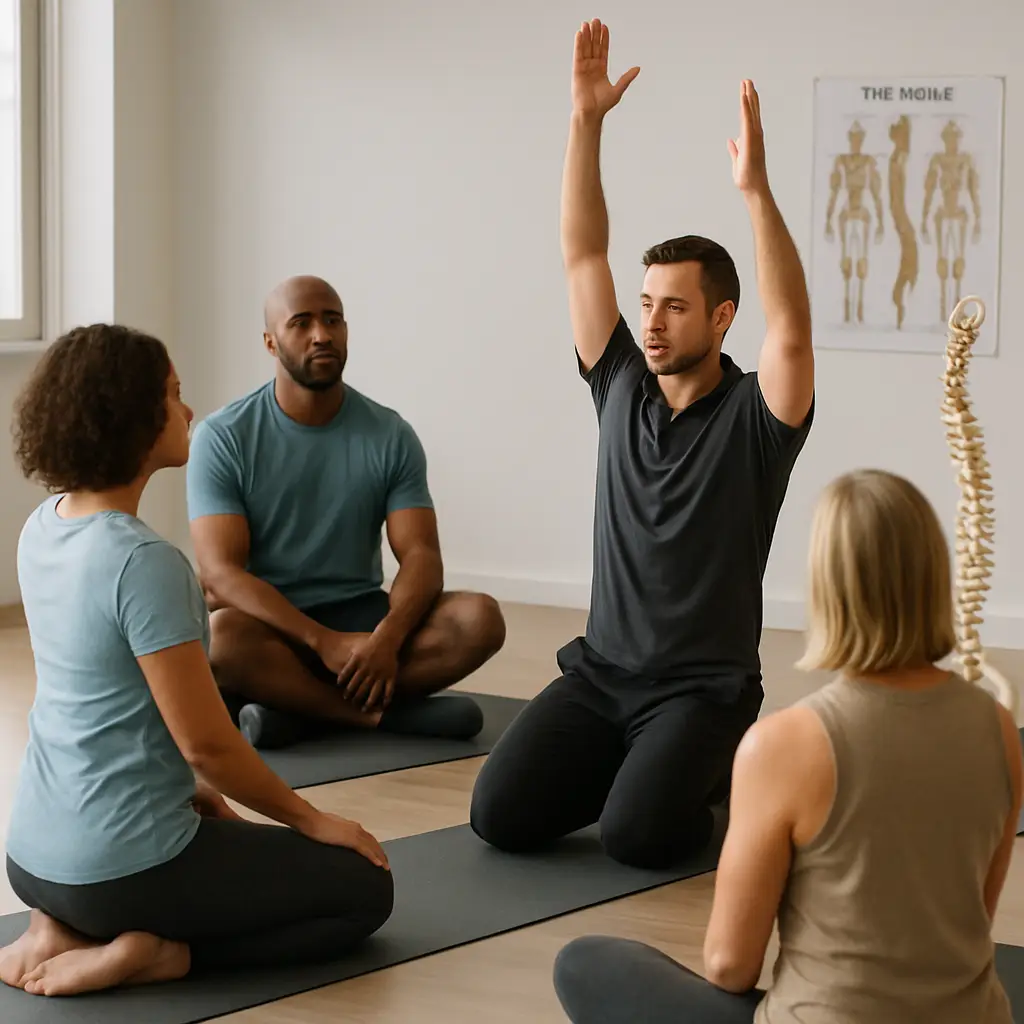The phrase corrective exercise shows up everywhere in gyms, physical therapy clinics, and YouTube workout channels. But here’s the problem: most so-called “corrective” movements do very little to actually correct the body. They might stretch a muscle or make you sweat, but they don’t normalize posture, biomechanics, or fascia—the true foundations of movement.
A real corrective exercise does not just look good on paper or fit a trendy label. It changes the way your body functions, balances tension across joints, and restores harmony in the system. When done correctly, it should help your body hold better alignment naturally, not just while you’re doing the exercise.

What Makes a Real Corrective Exercise?
A genuine corrective exercise should check three essential boxes:
- Targeted impact – It works on a specific area of the body (a joint, spinal segment, or fascial chain) that is out of balance.
- Posture-driven – Instead of isolating one muscle, it addresses how that area interacts with the entire body through tensegrity (balanced tension).
- Sustainable change – The result is not just a temporary stretch or pump. You should feel and move differently afterward—less pain, more space, better function.
If an exercise doesn’t create these changes, it isn’t truly corrective—it’s just another generic workout move.
The Wrong Example (And What’s Better)
Take the prone cobra (also called the McKenzie press-up). This exercise is often given for back pain because it forces the spine into extension. The idea is that “arching” the back will reduce disc pressure. But for most adults, especially those with disc compression or herniation, this is risky.
Here’s why: when the discs are already being pushed backward, forcing them into more extension just squeezes them further. Instead of healing, you may end up with more bulging, nerve irritation, or even worsening herniation.
What’s better? Instead of forcing a position, true corrective exercise should decompress the spine. It should create space, not more compression. That’s where ELDOA comes in.
ELDOA—The #1 Corrective Exercise for Back Pain
ELDOA (developed by French osteopath Guy VOYER, DO) is the gold standard of corrective exercise for compressive spinal pain. Unlike generic stretches, ELDOA uses precise, postural positions designed to open space between individual vertebrae.
- How it works: Each ELDOA posture places the body in exact angles and tensions that “self-normalize” a joint. For the spine, this creates decompression at the disc level, allowing fluid exchange and rehydration.
- The result: Pain decreases, posture improves, and your body begins to “hold” better alignment naturally.
Instead of simply masking symptoms, ELDOA corrects the underlying problem—compression. That’s what makes it a real corrective exercise.
Why ELDOA Works When Other Methods Fail
Traditional corrective programs often:
- Focus too much on strengthening one muscle group.
- Stretch areas without integrating them into full-body posture.
- Treat the symptom instead of the structure.
ELDOA takes the opposite approach. By targeting the fascia and tensegrity system, it changes how the whole spine functions. Members at SolCore Fitness in Santa Fe have used ELDOA to finally find freedom from chronic back and neck pain—even when physical therapy, chiropractic, or generic “core” programs didn’t help.
The difference is clear:
- Not corrective: “Do this back extension, it’ll feel good.”
- Corrective: “Here’s the exact posture that decompresses your L5-S1 disc, restores balance, and lets your spine move naturally again.”
That’s the power of real corrective exercise.
The Takeaway
If you’ve been searching for corrective exercise for back pain, be careful. Most of what’s out there is not truly corrective—it’s just exercise with a fancy label. The right approach doesn’t push your spine further into trouble. It creates space, restores balance, and sets your body up for lasting relief.
That’s why, at SolCore Fitness, we use ELDOA as the cornerstone of corrective back pain programs. Because when you correct the source, not just the symptom, you get long-term freedom—not another temporary fix.
Want to try ELDOA and set a true foundation for a pain-free, active life?
Free Consultation
https://www.solcorefitness.com/free-consultation/
Get more information @

Leave a Reply